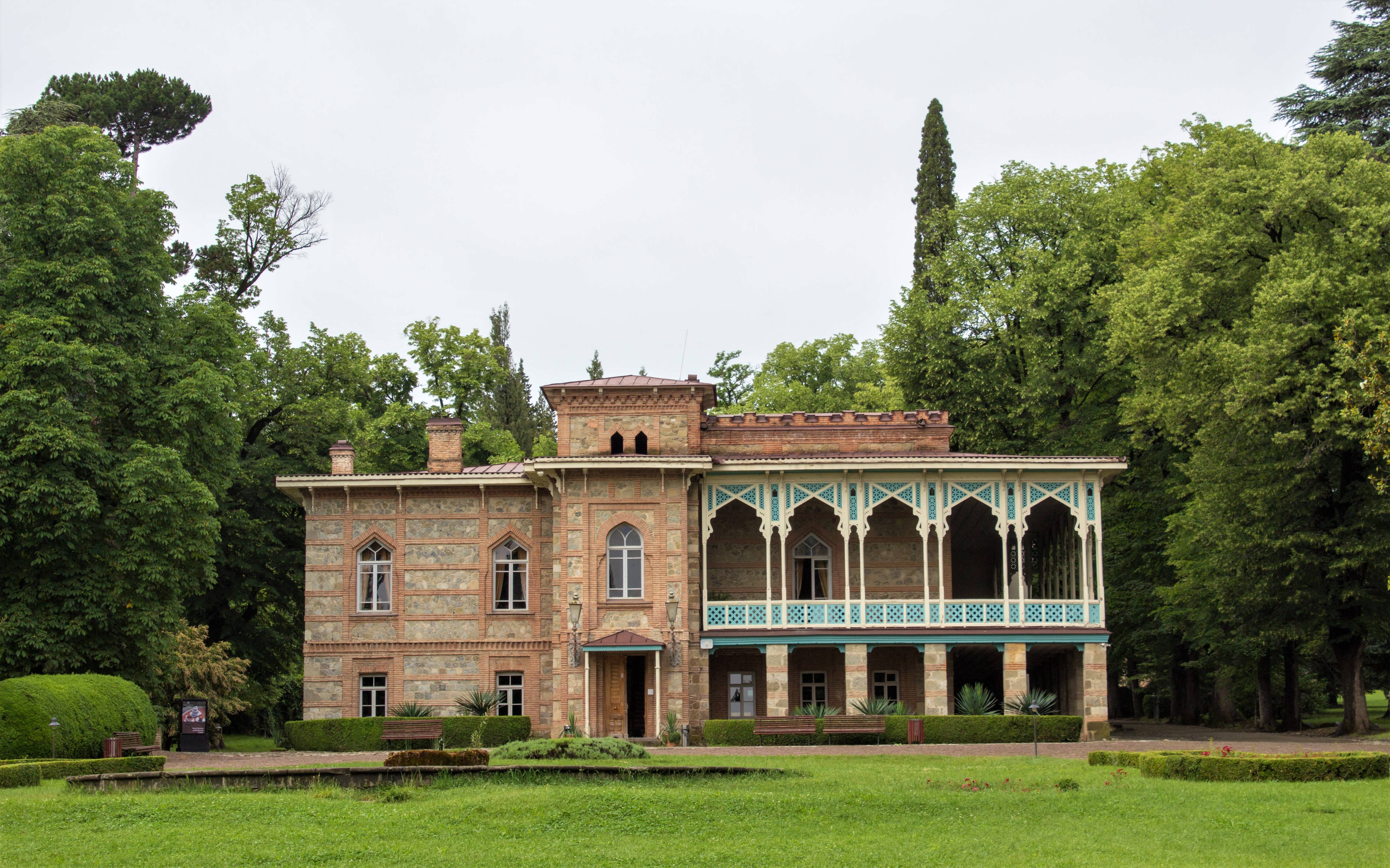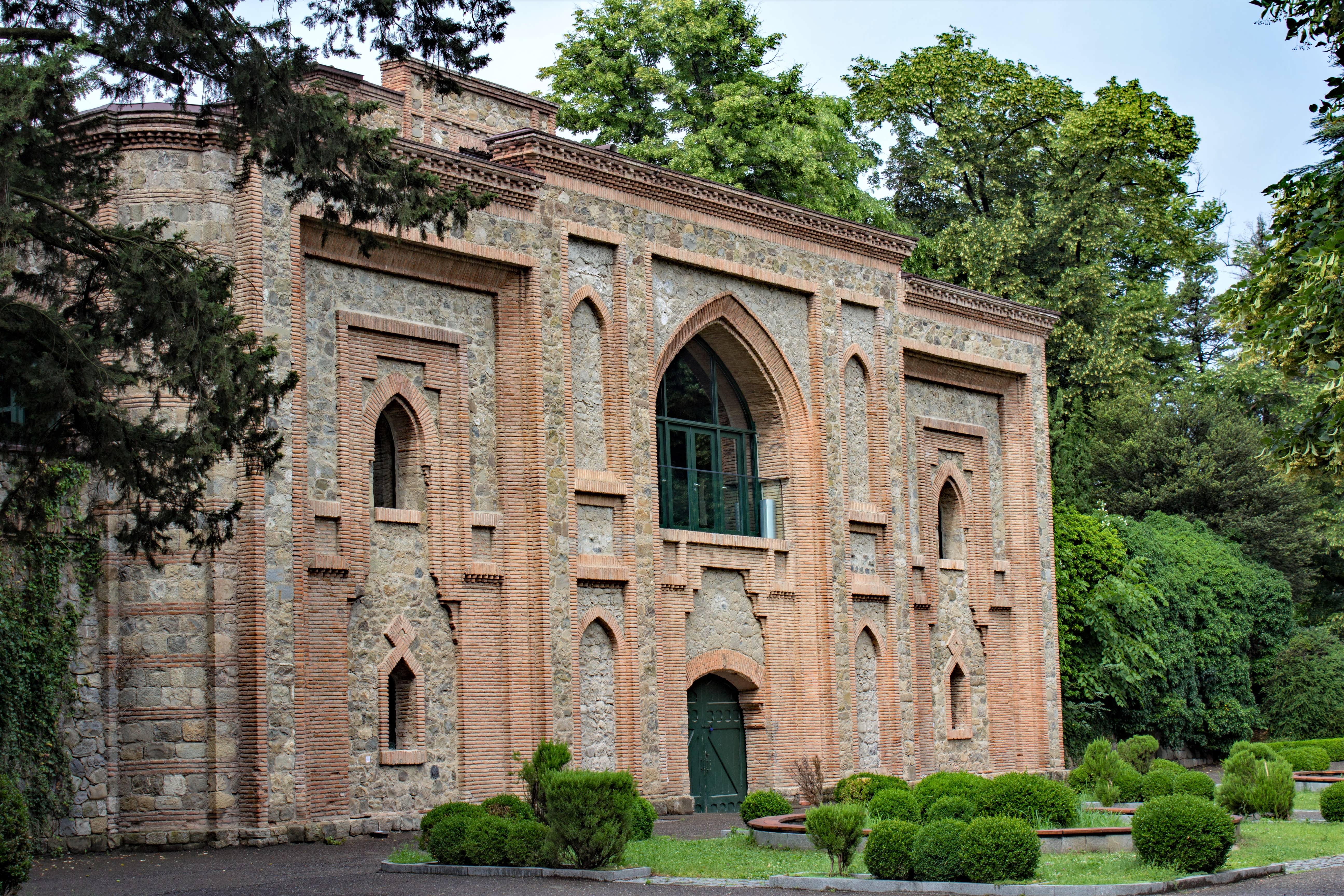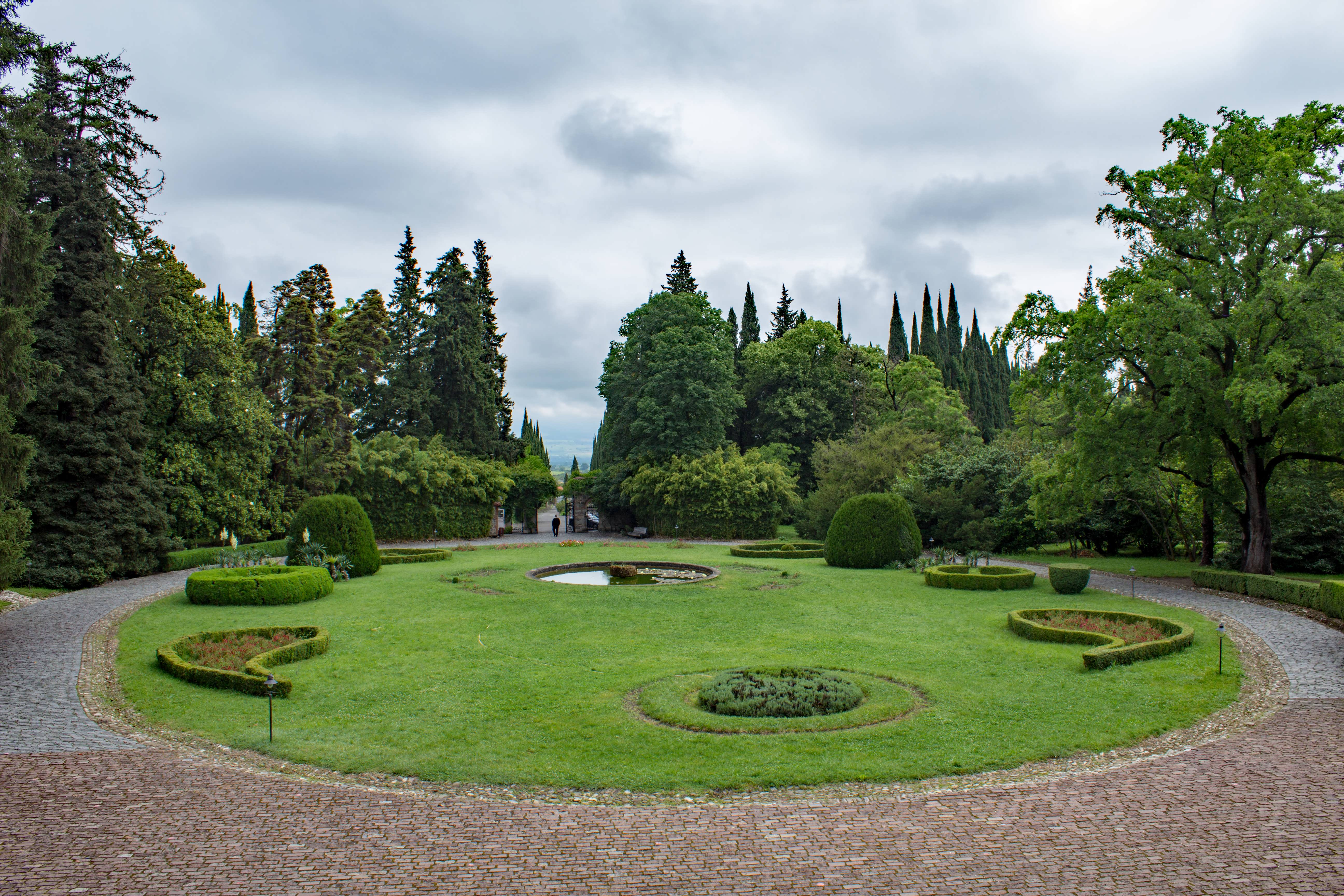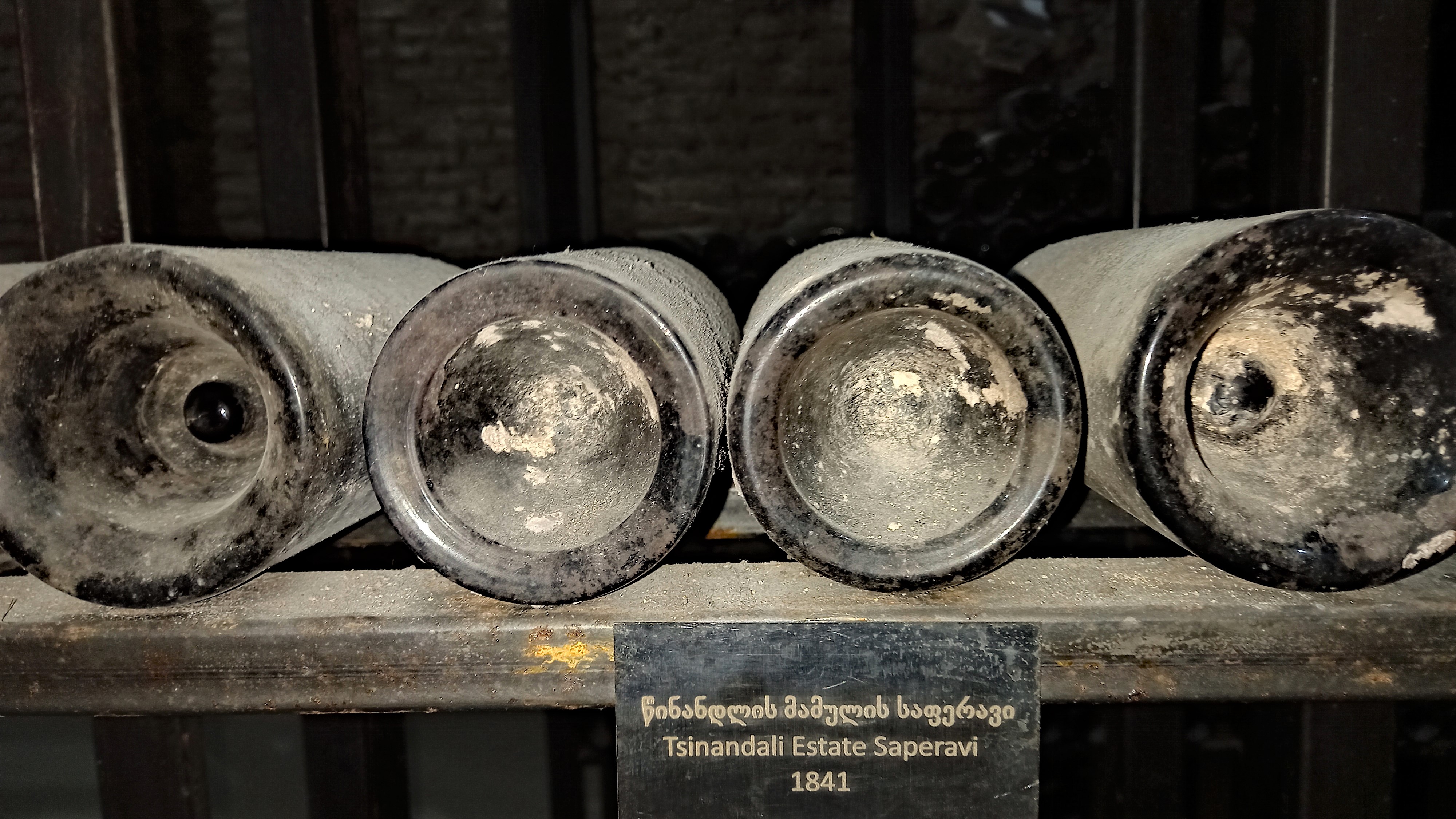Georgians have been making wine for 8,000 years using the Qvevri method, where grapes are simply put in clay vessels submerged underground. However, after visiting France, an aristocratic poet, Alexander Chavchavadze, began making wine in 1841 using more traditional European methods.
We visited Alexander’s former home, now the Tsinandali Estate, for a prebooked tour of the house. Having donned plastic overshoes, we were tagged on to a group of Koreans and given a potted history of Alexander’s family, made up of one son and three daughters. The son was kidnapped by the Soviets and held for nine months until a ransom of one million roubles was paid. This was borrowed from the bank, but when Alexander was unable to pay this back, the Romanov family took over the house. All the three daughters married well: Nino was married at the age of 16, widowed a year later and never remarried; Ekateriné married David Dadiani, a relative of Napoleon; and Sophie, married the minister of education of imperial Russia.
The tour taking around 40 minutes, led us through various rooms containing the original furniture. Pieces including Steinway and Bechstein pianos had been brought back from Europe, and dining tables were laid with elegant china and glass. Photos were only allowed from the balcony overlooking the garden and not inside.
At the rear of the house, which was new, following destruction by the Chechnyans, we found two temporary exhibitions.
The first was about the life of Bertha von Suttner (1843 to 1914) who was the first woman to be awarded the Nobel Peace Prize following publication of one of the 19th century’s most influential books, the anti-war novel “Lay Down Your Arms”.
The second displayed photographs taken by Harriet Chalmers Adams who, in the early 1900s, traversed Latin America on horseback and acquired the nickname Mrs Marc Polo of the Americas. She was also the only female journalist allowed on the front lines during World War I and made it her mission to visit every country that had been a Spanish colony.
Visit over, we explored the extensive grounds and discovered a rather swish looking Radisson Hotel, and open air amphitheatre seating 1200.
At a small ethnographic museum, steps led to the cellar where 22 tunnels contained 16,500 bottles of wine. Some, dating back to 1841 would have gone off, as they only last for a maximum of 70 years if turned regularly. However, if corks are replaced every 4 years, they can last longer. We saw some old tools used in the Qvevri wine making method including a sartskhi or wooden trough, long handled scrubbing brush with a head made from layers of pressed cherry tree bark used to clean out the vessel, and an orshimo, a bulbous vessel, often a gourd or pumpkin, attached to a wooden handle to ladle wine out of the Qvevri.
This was a huge estate with lots of activities on offer, including wine tasting, but we were on our way to Tbilisi where, over the next few days, we tried and enjoyed several bottles of Tsinandali Estate wine.












